Want to stop those darn strawberries from escaping? OK – seriously now, everyone likes strawberries but so do birds, snails, and a heap of other animals. If growing your own strawberries has been a challenge due to the neighborhood critters getting to them before you do, a strawberry cage is your solution.
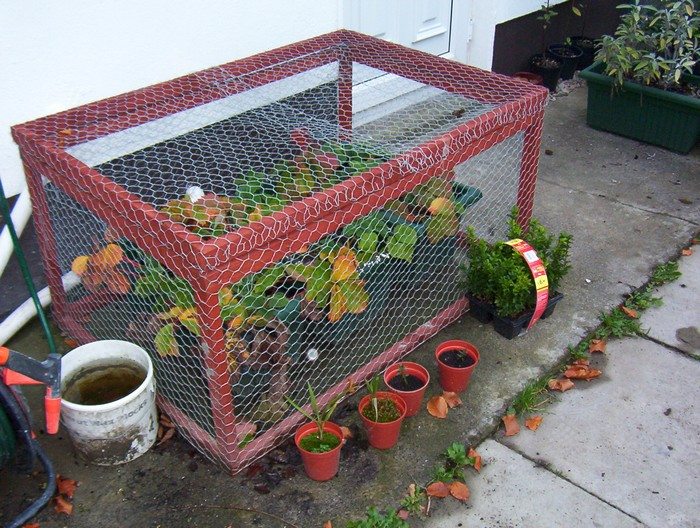
This featured project is perfect for those who are yet to plant strawberries in their garden since this is also a raised garden bed. Already growing strawberries in a raised garden bed? Then adopt this idea and just add the ‘lids’. It’s easy to build and easy to use for harvesting and tending to plants. To learn more about this strawberry cage, head over to the link provided below.
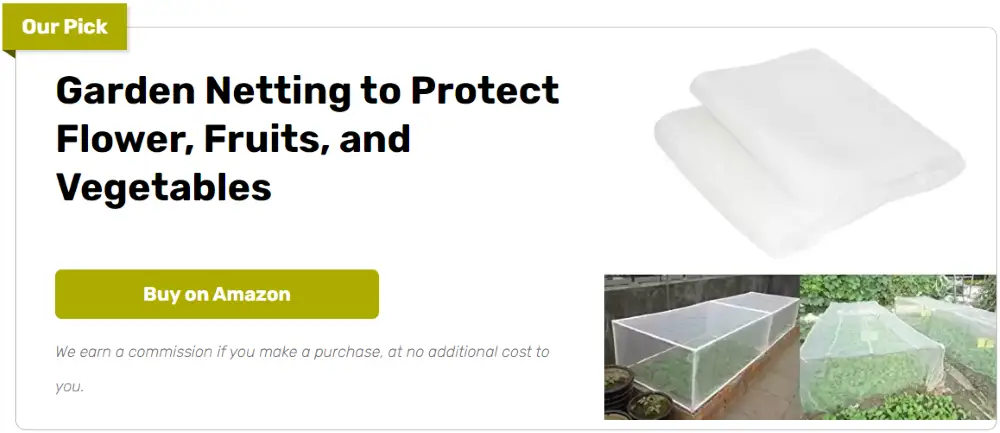
However, if you have an existing in-ground strawberry garden, you can simply build other versions of a strawberry cage. If you want ideas you can get them from our album of strawberry cages below ;)
Now your strawberries are out of reach of those sneaky critters like possums or squirrels, rabbits, and birds! BTW, if your problem is wasps just use a screen instead of hardware cloth/chicken wire. :)
Do you need a strawberry cage in your backyard?
Contents
Building a Strawberry Cage
Materials
- Cedar Timber
- Hardware Cloth
- Heavy Duty Hinges
- Hooks
- Handles
- Wood Screws
Tools
- Measuring Tape
- Table Saw
- Drill
Instructions
Step 1: Plan Your Cage
- Measure your garden space to determine the size of your strawberry cage. Consider the height to ensure it’s tall enough to protect the plants but accessible for harvesting.
- Sketch a simple design of your cage, including dimensions for length, width, and height.
Step 2: Cut the Timber
- Using the table saw, cut the cedar timber according to your measurements. You’ll need four pieces for the frame’s sides, four for the top frame, and additional pieces for the supports.
- Safety Tip: Wear protective eyewear and follow the table saw’s safety instructions.
Step 3: Assemble the Base Frame
- Lay out the timber pieces for the base frame on a flat surface.
- Drill pilot holes to prevent the wood from splitting.
- Secure the corners with wood screws to form a rectangular base.
Step 4: Add Vertical Supports
- Stand the base frame upright.
- Attach a vertical support timber at each corner of the base frame. Ensure they are perfectly vertical using a level.
- Secure each support to the base with wood screws.
Step 5: Construct the Top Frame
- Assemble the top frame on the ground, mirroring the dimensions of the base frame.
- Attach it to the top of the vertical supports, ensuring it is level and securely fastened with wood screws.
Step 6: Install the Hardware Cloth
- Roll out the hardware cloth and cut it to size with a wire cutter, ensuring it covers all sides and the top of the cage.
- Staple the hardware cloth to the wooden frame, starting from the bottom and working your way up. Ensure it’s taut and secure.
Step 7: Attach the Door
- Construct a door frame using cedar timber, slightly smaller than the cage opening.
- Cover the door frame with hardware cloth.
- Attach the door to the cage using heavy-duty hinges.
- Install hooks and handles on the door for easy access.
Step 8: Final Touches
- Inspect the cage for any sharp edges or protruding screws and address as necessary.
- If desired, treat the cedar timber with a natural wood preservative to extend its life.
Step 9: Place Your Cage
- Position your strawberry cage over your strawberry bed.
- Secure it in place by burying the base slightly into the soil or using stakes.
Strawberry Varieties Best Suited for Caged Cultivation
Strawberry cages offer an effective solution for protecting your precious strawberry plants from various pests, including birds, insects, and small mammals. These structures not only safeguard your crop but can also create a controlled environment that can influence the growth and productivity of certain strawberry varieties.
Here’s a look at some of the best strawberry varieties suited for cultivation within strawberry cages, considering factors like size, growth habit, and fruiting patterns.
‘Earliglow’
Earliglow is celebrated for its early ripening, excellent flavor, and disease resistance. This variety thrives in a caged environment, where its early fruiting can be protected from pests. Its compact growth makes it ideal for small spaces.
‘Honeoye’
Honeoye is a versatile and hardy variety that produces a bounty of large, sweet berries. It’s well-suited for caged cultivation due to its robust growth and tolerance to various soil types and climates.
‘Albion’
Albion is known for its large, sweet fruits that can be harvested from late spring through fall. This everbearing variety is perfect for strawberry cages as it provides a continuous crop, and the controlled environment can help manage its susceptibility to certain diseases.
‘Eversweet’
Eversweet offers the advantage of producing sweet, flavorful strawberries even in hot summer conditions. It’s an excellent choice for caged cultivation, especially in areas with warmer climates, as the cage can provide some shade to prevent overheating.
‘Seascape’
Seascape strawberries are appreciated for their large size and consistent flavor throughout the growing season. As a day-neutral variety, it benefits from the protection of a strawberry cage, which can help extend the fruiting period.
‘Quinault’
Quinault is a self-pollinating variety that produces soft, sweet berries. Its ability to bear fruit in its first year and its adaptability to different environments make it a great candidate for caged cultivation, where it can be shielded from the elements and pests.
‘Pineberry’
Pineberry is a white strawberry variety with a unique pineapple-like flavor. It’s particularly sensitive to pests, making it an ideal choice for growing in a strawberry cage. The cage can also protect its delicate fruits from direct sunlight, preserving their unique color and taste.
Strawberry cages are a practical and effective way to protect your strawberry plants from a variety of external threats. Choosing the right strawberry variety to grow in your cage can make a significant difference in your gardening success. The varieties listed above are known for their suitability for caged cultivation, offering a mix of flavors, harvest times, and growth habits to suit any gardener’s needs.
Click on any image to start the lightbox display. Use your Esc key to close the lightbox.![]()
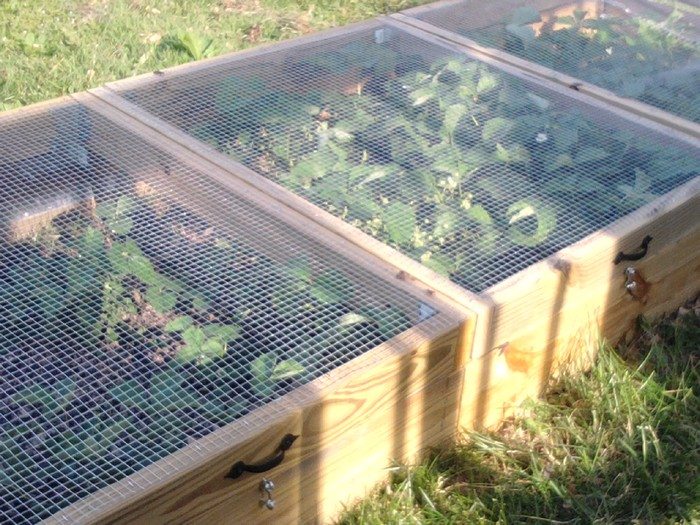
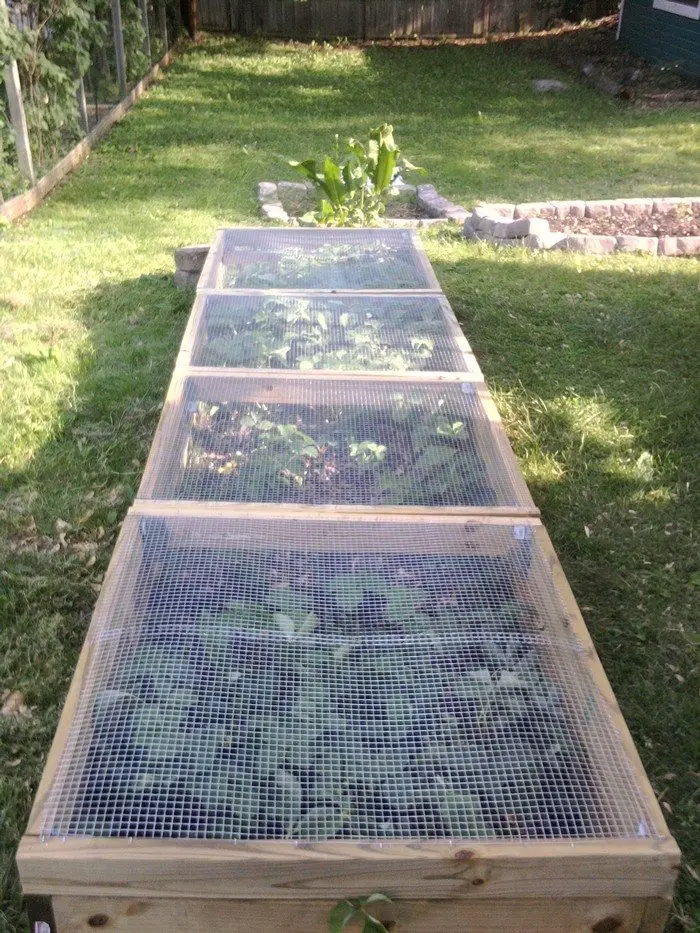
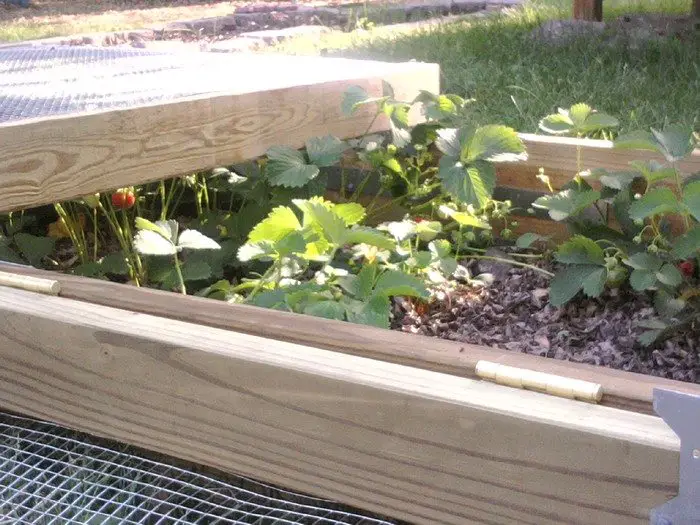
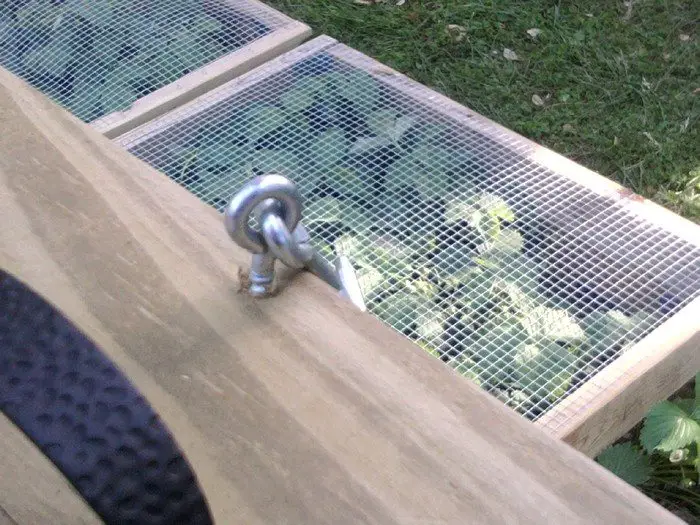
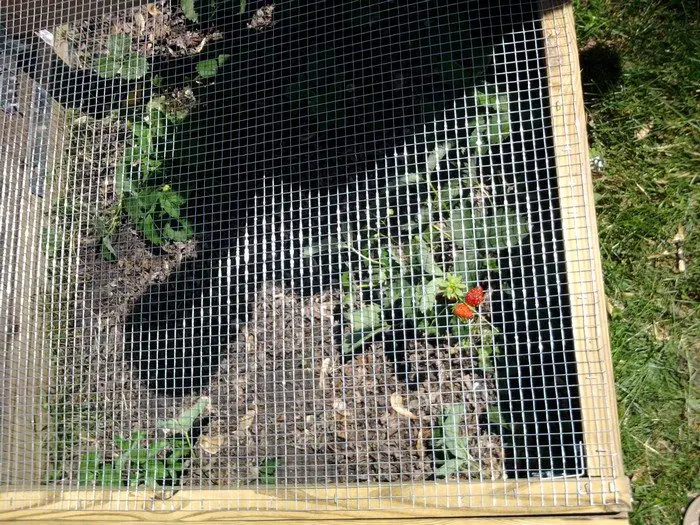
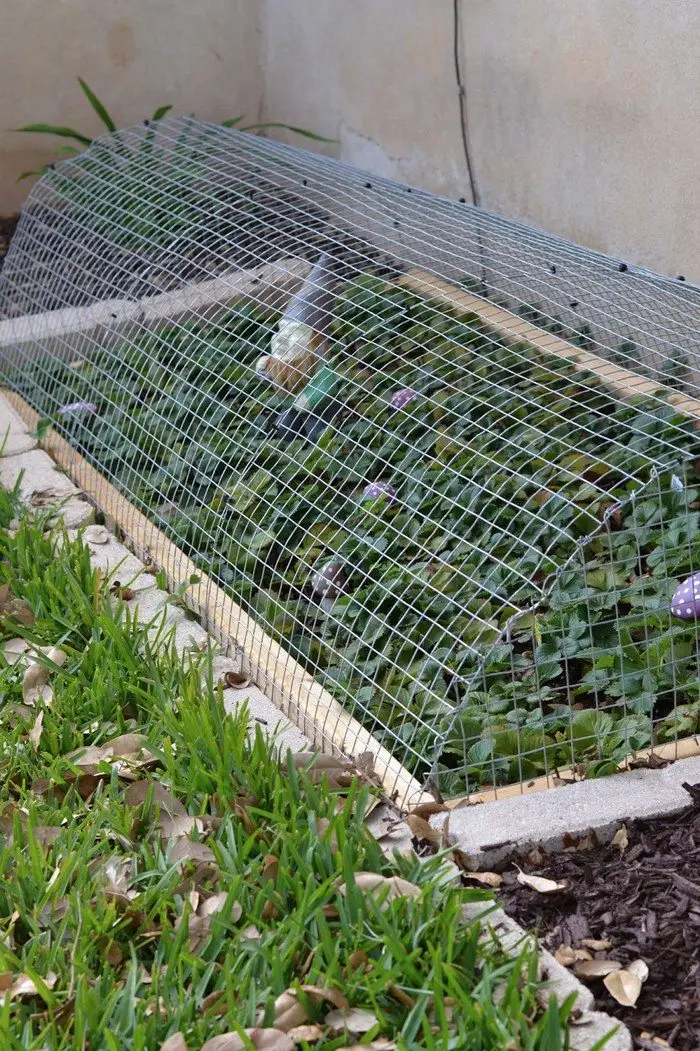

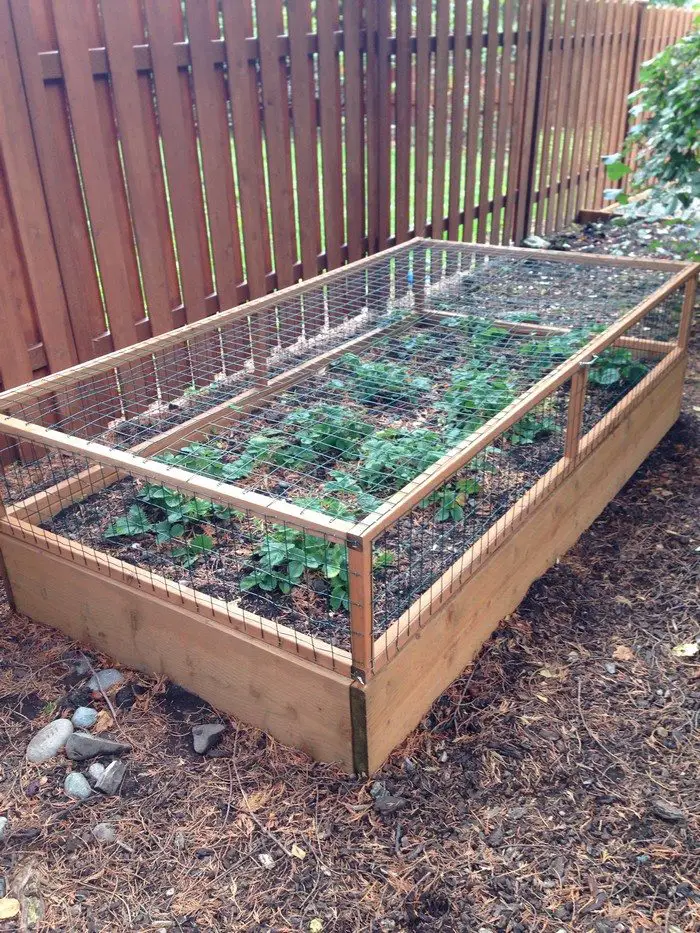

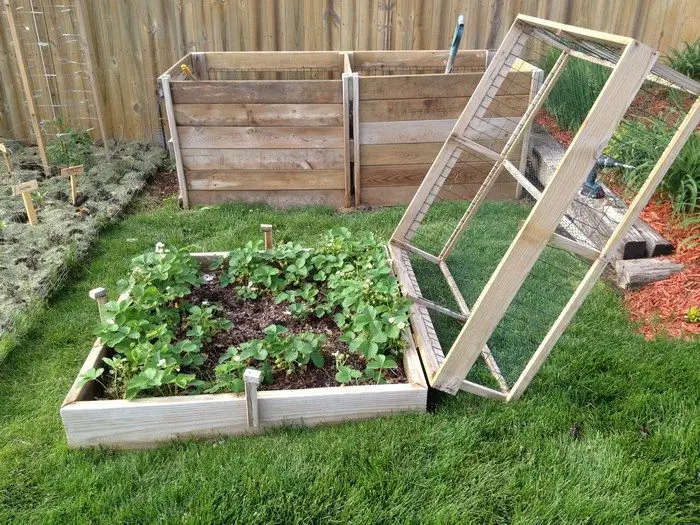
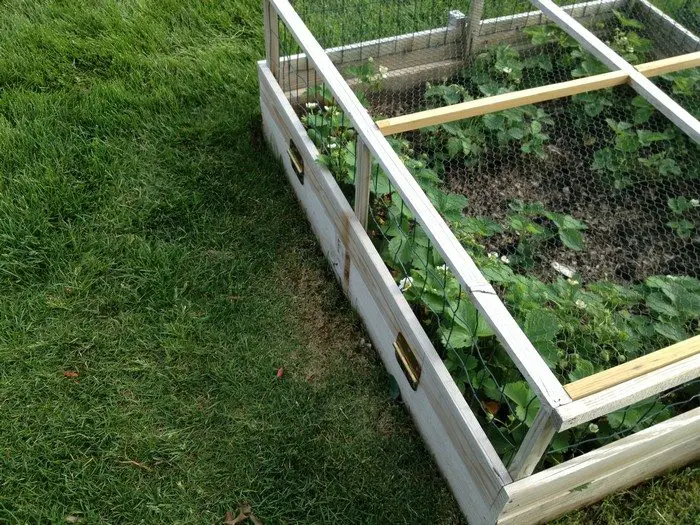
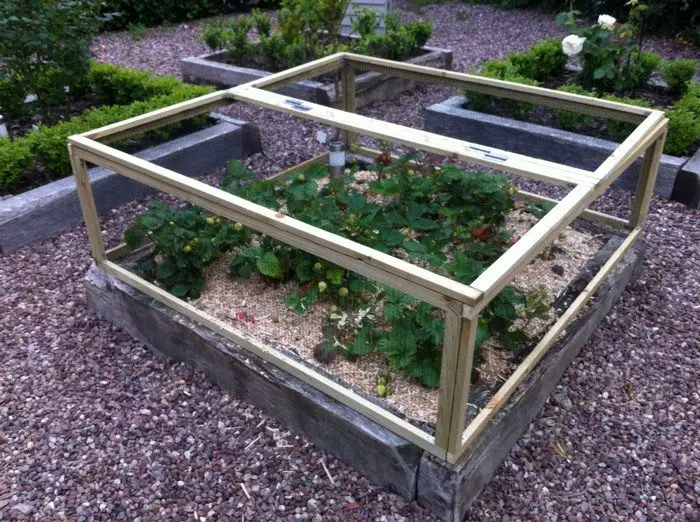
Integrated Pest Management (IPM) for Strawberries
Integrated Pest Management (IPM) is a sustainable approach to managing pests that combines biological, cultural, physical, and chemical tools in a way that minimizes economic, health, and environmental risks. For strawberry cultivation, IPM is crucial for ensuring healthy, productive plants while reducing the reliance on chemical pesticides.
The use of a strawberry cage is an integral part of the physical strategy in IPM, offering protection against various pests without harming the environment or the beneficial organisms that support strawberry growth.
Cultural Practices
- Crop Rotation: Regularly rotating strawberries with unrelated crops can help break the life cycles of pests and diseases associated with continuous strawberry cultivation. This practice can also improve soil health and fertility.
- Healthy Plant Material: Starting with disease-free plants is fundamental. Select resistant varieties and certified seedlings to reduce the risk of introducing pests and diseases into the garden.
Physical and Mechanical Controls
- Strawberry Cages: Strawberry cages serve as a physical barrier to protect strawberries from birds, rodents, and large insects. By enclosing the plants, these cages can significantly reduce damage and minimize the need for chemical interventions.
- Mulching: Applying mulch around strawberry plants can deter slugs and snails, reduce weed pressure, and maintain soil moisture. Organic mulches like straw or wood chips are preferred, as they also add organic matter to the soil as they decompose.
Biological Controls
- Beneficial Insects: Encourage or introduce beneficial insects such as ladybugs, lacewings, and predatory mites that prey on common strawberry pests like aphids and spider mites. Planting companion plants that attract these beneficials can enhance their presence.
- Nematodes: Soil-dwelling beneficial nematodes can be introduced to target and control soil-borne pests such as strawberry root weevils and certain types of grubs.
Chemical Controls
- Targeted Pesticides: As a last resort, use pesticides that are selective and have minimal impact on non-target species and the environment. Organic options, such as neem oil and insecticidal soaps, can be effective against specific pests and are generally safer for beneficial organisms.
- Timely Application: Apply chemical controls only when monitoring indicates that pest populations are at a level that could cause economic damage. This threshold is known as the economic threshold and varies between pests and growing conditions.
Monitoring and Record-Keeping
- Regular Inspections: Frequent monitoring of strawberry plants for signs of pests and diseases is essential for early detection and management. Regular checks allow for timely interventions before problems escalate.
- Record-Keeping: Maintain detailed records of pest occurrences, treatment actions, and their outcomes. This information is valuable for evaluating the effectiveness of IPM strategies and making informed decisions in the future.
Enhanced Cultural Practices
- Soil Health Improvement: Enhancing soil health through the addition of organic matter, such as compost or green manure, can boost plant health and resilience against pests. Healthy plants are less susceptible to pest infestations and diseases.
- Optimal Plant Spacing: Maintaining optimal spacing between strawberry plants ensures adequate air circulation, which can reduce the humidity levels around the plants. Lower humidity helps prevent fungal diseases that attract certain pests.
Advanced Physical Controls
- Row Covers: Using floating row covers made of lightweight, permeable fabric can protect strawberry plants from various pests, including aphids, beetles, and mites. These covers allow light, water, and air to reach the plants while keeping pests out.
- Hand Picking: Regularly inspecting plants and manually removing pests or infected plant parts can be a simple yet effective way to manage pest populations. This method is particularly useful for large, visible pests like caterpillars and slugs.
Biological Enhancements
- Habitat for Natural Predators: Creating habitats to attract and sustain natural predators of strawberry pests, such as birds, bats, and predatory insects, can provide long-term pest control. Installing birdhouses or bat boxes near the garden can encourage these predators to reside in the area.
- Microbial Inoculants: Applying beneficial microbial inoculants, such as mycorrhizal fungi and beneficial bacteria, can improve plant health and resistance to pests and diseases. These microbes form symbiotic relationships with plants, enhancing nutrient uptake and stress tolerance.
Chemical Strategy Adjustments
- Botanical Insecticides: Botanical insecticides, derived from plants known for their insecticidal properties, can offer a more natural chemical control option. Products containing pyrethrin (from chrysanthemums) or azadirachtin (from neem) can target pests with minimal impact on beneficial insects.
- Pheromone Traps: Pheromone traps attract specific pest species using synthetic versions of the natural chemicals insects use to communicate. These traps can help monitor pest populations and reduce mating, thereby lowering future generations of pests.
Innovative Monitoring Techniques
- Drone and Sensor Technology: Utilizing drones equipped with cameras or sensors to monitor large strawberry fields can help identify pest infestations or disease outbreaks early. This technology allows for targeted interventions, reducing the need for broad-spectrum pesticide applications.
- Disease Forecasting Models: Implementing disease forecasting models that predict pest and disease outbreaks based on weather data and historical pest activity can help growers anticipate problems and apply controls more effectively and efficiently.
Integrated Pest Management for strawberries, incorporating the use of strawberry cages, offers a balanced approach to pest control that prioritizes environmental health and sustainability. By integrating cultural, physical, biological, and, when necessary, chemical strategies, gardeners can effectively manage pests while supporting a vibrant ecosystem within their strawberry gardens.
Maximizing Strawberry Yield with Vertical Gardening
Maximizing strawberry yield through vertical gardening is an innovative approach that not only saves space but also can enhance fruit production and ease of harvest. This method is particularly beneficial for those with limited garden space, such as urban gardeners, or anyone looking to increase their strawberry yield per square foot. Incorporating strawberry cages into vertical gardening can further protect your berries from pests and diseases, ensuring a healthier and more bountiful harvest.
Here’s how to optimize strawberry yield with vertical gardening, integrating the use of strawberry cages.
Benefits of Vertical Gardening
- Space Efficiency: Vertical gardening allows you to grow strawberries upwards, significantly reducing the footprint needed for cultivation. This is ideal for small gardens, patios, or balconies.
- Improved Air Circulation: Growing strawberries vertically enhances air circulation around the plants, reducing the risk of fungal diseases and promoting healthier growth.
- Easier Pest Management: With the addition of strawberry cages, vertical gardening can simplify pest management. Cages protect the plants from birds and ground pests, while the vertical aspect makes it harder for crawling insects to reach the berries.
Choosing the Right System
- Tower Gardens: Tower gardens are vertical structures with multiple growing pockets or spaces for plants. They are ideal for strawberries because they allow for ample growth room and easy access for pollinators.
- Wall Planters: Wall planters utilize vertical surfaces to grow strawberries. They can be made from various materials, such as fabric pockets or repurposed pallets, and can be fitted with a strawberry cage framework for protection.
- Hanging Baskets: Hanging baskets can be used to grow strawberries off the ground, making them inaccessible to many pests. Baskets can be covered with netting or a small cage to protect the berries from birds.
Implementing Strawberry Cages
- Customization: Design your strawberry cage to fit the specific vertical gardening setup you choose. Ensure it is easily removable or has access points for harvesting and maintenance.
- Material Selection: Use lightweight materials such as PVC pipes or wire mesh for the cage to avoid adding too much weight to the vertical garden structure.
- Integration: Integrate the cage into the vertical system in a way that does not impede plant growth or access to sunlight. Ensure there is enough space for the strawberries to grow and for you to access them for maintenance and harvesting.
Cultivation Tips
- Variety Selection: Choose strawberry varieties that are known to perform well in vertical gardens, such as day-neutral or everbearing varieties, for a continuous harvest throughout the growing season.
- Regular Maintenance: Keep the plants well-watered and fertilized. Vertical systems can dry out more quickly than traditional gardens, so consider a drip irrigation system for consistent moisture.
- Pollination: Ensure good pollination for your strawberries, especially in urban environments where natural pollinators may be less common. You may need to hand pollinate flowers to ensure fruit set.
Maximizing strawberry yield with vertical gardening and the strategic use of strawberry cages offers a practical and efficient way to produce a substantial crop, even in limited spaces. This approach not only makes the most of vertical space but also promotes healthier plants by improving air circulation, simplifying pest management, and facilitating easier care and harvest. With the right setup, variety selection, and care, vertical gardening can transform your strawberry cultivation into a highly productive endeavor.
Conclusion
Building a strawberry cage is a straightforward project that yields significant benefits for any gardener looking to protect their strawberry plants from pests and diseases. This method enhances the quality and quantity of the harvest, ensuring that fruits remain untouched by birds, insects, and other critters. Additionally, strawberry cages can contribute to a more organized and aesthetically pleasing garden space. Ultimately, the investment in time and materials to construct a strawberry cage pays off through increased yields and the satisfaction of enjoying home-grown, pest-free strawberries.





